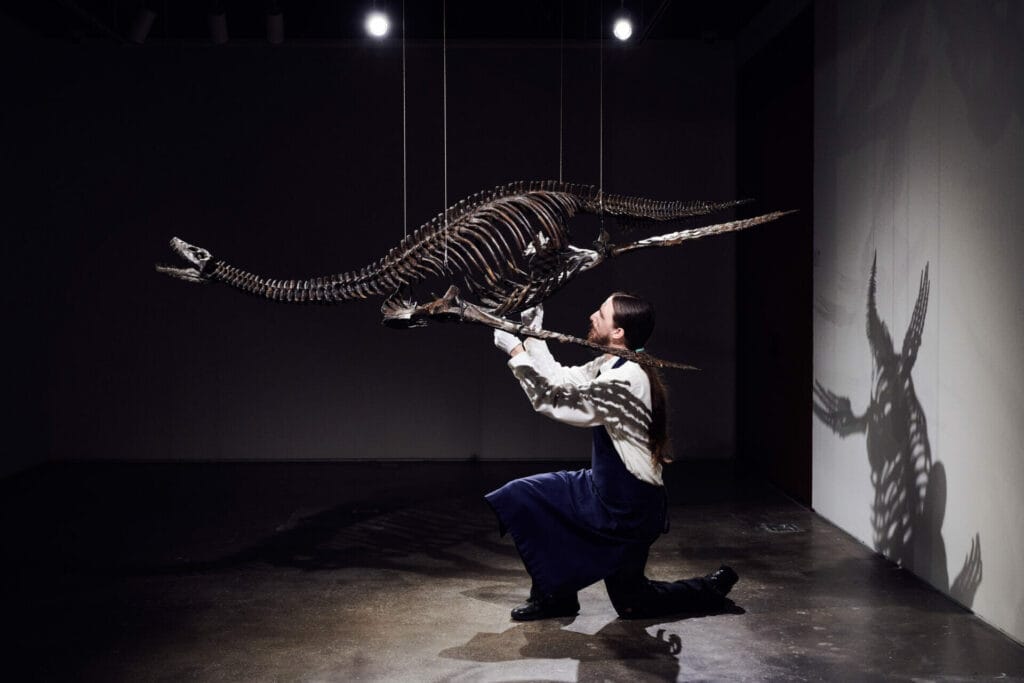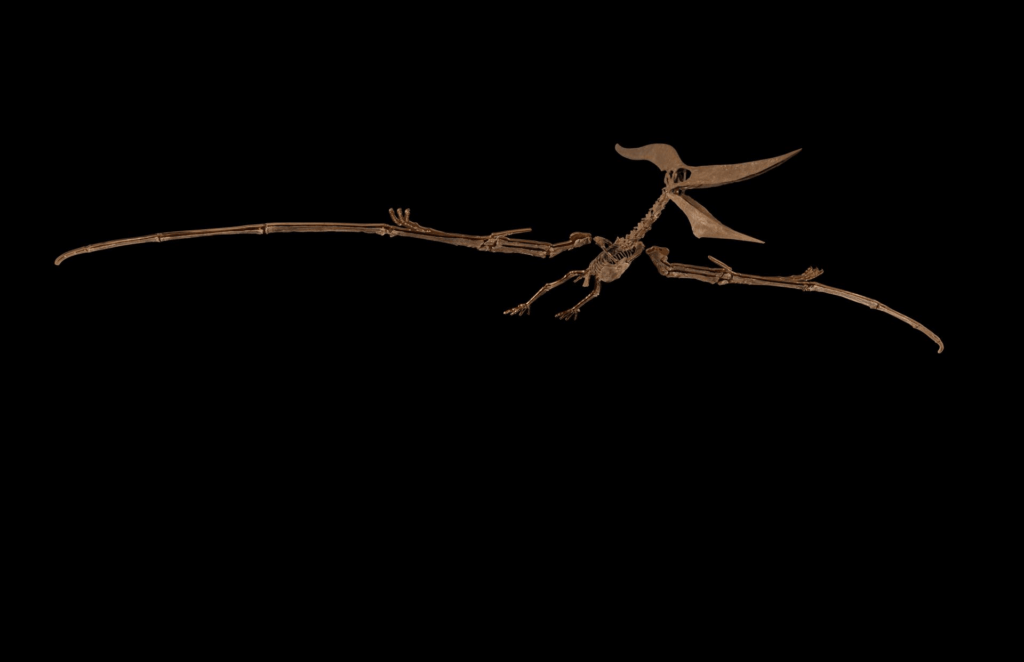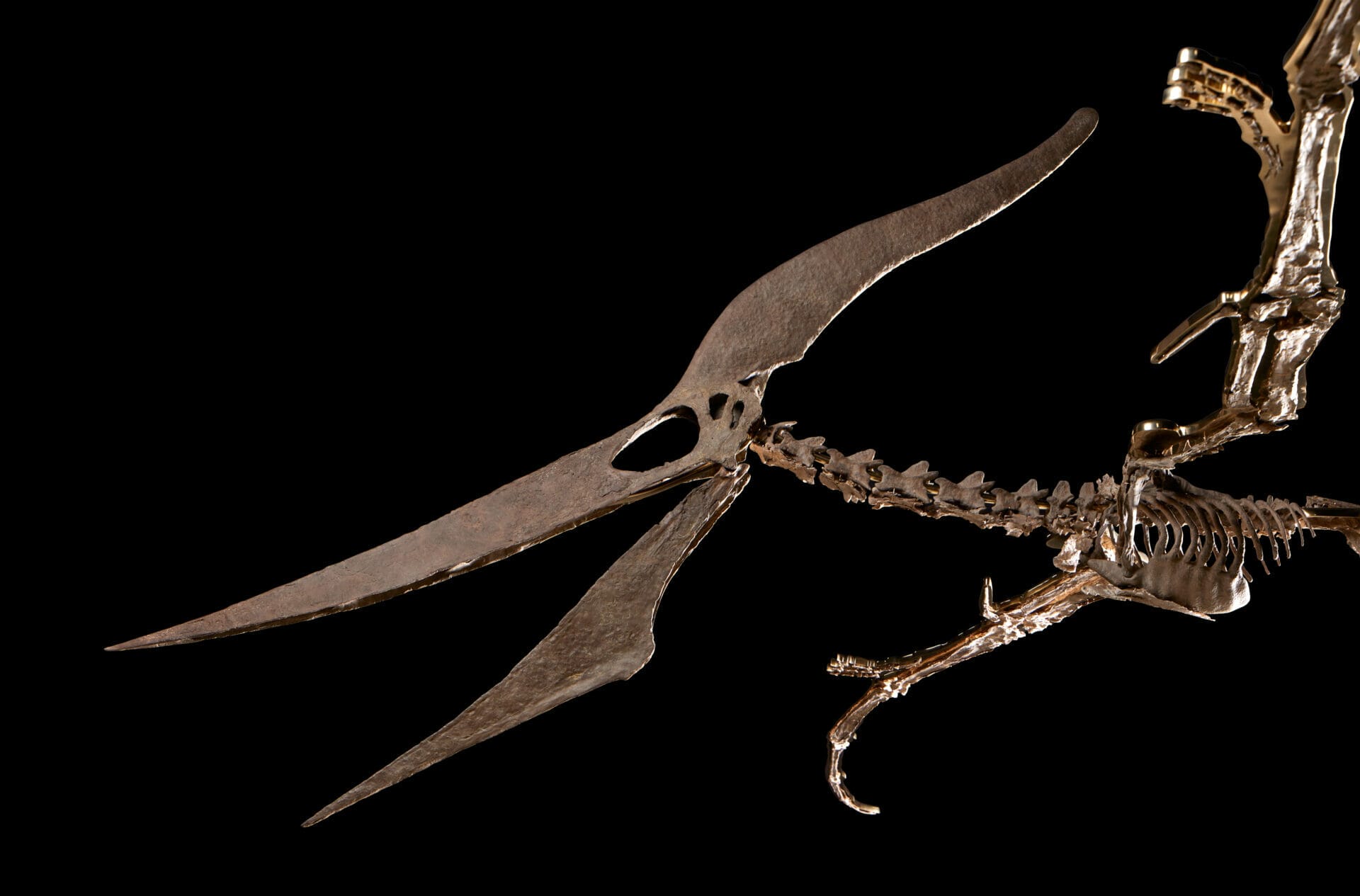Legendary Air and Sea Predators from the Age of the Dinosaurs,
Dating Back As Far As 190 Million Years Ago,
To Highlight Sotheby’s Natural History Auction
One of the Largest, and Most Fearsome Flying Species Ever to Roam Earth:
The Pteranodon
(Est. $4 – $6 Million)
The Best-Preserved Plesiosaur Ever Offered on the Market
*The Marine Reptile Thought to Have Inspired the Legendary Loch Ness Monster*
(Est. $600,000 – $800,000)
Public Exhibition Opens 20 July, Ahead of Live Auction on 26 July

“More than 25 years since the groundbreaking sale of Sue the T-Rex at Sotheby’s, we are very excited to now turn our attention to its predatory peers of the sky and the sea. ‘Horus’ The Pteranodon and ‘Nessie’ the Plesiosaur spotlight a different side of Earth’s prehistory, showing the range of extraordinary creatures that once called this planet home. Both of these species have long played an important role in our collective imaginations, from inspiring ancient folklore and myths to appearing in Hollywood blockbusters and television shows. They are each instantly recognizable and are remarkable witnesses to the incredible evolutionary power that has shaped life on earth for eons.”
Cassandra Hatton, Sotheby’s Global Head of Science & Popular CultureNEW YORK, 11 JULY 2023 – This July, Sotheby’s will auction the mounted fossil skeletons of two of the most feared predators to have ever lived on earth, ruling the air and sea millions of years ago during the age of the dinosaurs: the Pteranodon and the Plesiosaur. The fearsome duo, each dating to the late Cretaceous and lower Jurassic periods respectively, will be offered in Sotheby’s Natural History auction on 26 July, part of the annual Geek Week series of sales celebrating the history of science & technology, space exploration, and the natural world, taking place from 18-27 July.
The famous Pteranodon belonged to the family of Pterosaurs, the largest flying animals to have ever existed, and among the most amazing creatures in the evolution of vertebrate flight. Pterosaurs gained air superiority over the feathered dinosaurs and birds during the Mesozoic Era before going extinct around 66 million years ago at the end of the Cretaceous Period.
Pteranodon and Plesiosaur have long been two of the most popular icons of pre-historic life, having been featured in numerous films including blockbuster franchises Godzilla and Jurassic Park. While Pteranodon continues to be a leading source of imagination in the skies, Plesiosaur has further ignited collective fascination as is it believed to have inspired the silhouette of the legendary Loch Ness monster, forever immortalized in Robert Wilson’s infamous 1934 photograph.
Following last year’s sale of the first-ever Gorgosaurus skeleton in July and the first sale of a standalone Tyrannosaurus rex skull in December, these specimens mark the next significant new additions to Sotheby’s history of groundbreaking Natural History sales, following the first ever sale of a dinosaur at auction, with Sotheby’s sale of Sue the T. rex in 1997. Both the Pteranodon and Plesiosaur skeletons will be on public exhibition at Sotheby’s New York starting 21 June, bridging eons of geological history to present them side-by-side for the first time.

Horus “King of the Skies”
Pteranodon longiceps
Late Cretaceous (Approximately 85 million years ago)
Smoky Hill Chalk Member (Upper Section) Niobrara Formation
Logan County, Kansas
Estimate $4 – 6 Million
Leading Sotheby’s Natural History auction this year will be a monumental Pteranodon skeleton, one of the most iconic prehistoric predators that ever roamed the earth and one of the largest creatures to ever rule the skies. Offered with an estimate of $4 – 6 million, the Pteranodon marks a new milestone as the most valuable skeleton of the species offered at auction, placing it within the pantheon of dinosaurs such as Gorgosaurus and T-Rex.
“Horus,” named after the ancient Egyptian deity, God of kingship, protection, and sky, is not only among the largest well-preserved Pteranodons ever discovered, but is also one of the most complete and highest-quality ever discovered. With a displayed wingspan of approximately 20 feet it can be determined that “Horus” was a fully mature adult individual, and most certainly male. “Horus” is displayed in Sotheby’s galleries with wings outstretched in a soaring position, mounted on a custom armature rigged for ceiling suspension.
Other that standard bone joining and stabilization, almost all of the original fossil bones remain essentially unrestored, meaning that artificial filler was not used to replace missing bone sections. This is especially ideal for scientific study and transparency of authenticity. The only exception to this is the skull, since 3D restoration was required for accurate and aesthetic display of the skull sections. Those bones that were not found at the dig site were replaced with high-resolution 3D printed elements, primarily mirrored from the specimen itself.
Pteranodon belonged to an extinct family of winged creatures commonly known as Pterosaurs, reigning over the skies from the Mesozoic Era through their extinction at the end of the Cretaceous Period 66 million years ago. Living alongside the dinosaurs and spending its days flying over the ocean, it rarely returned to land. They would typically feed far from shore, sometimes hundreds of miles from the coastline, and terrestrial carnivores posed little threat. Its appearance is instantly recognizable for its incredible size, as well as a long and fearsome toothless beak used to hunt aquatic prey by dipping or plunge diving. Pteranodon took flight with powerful wings composed of a membrane of skin, muscle, and pycnofibers stretching from the ankles to a dramatically lengthened fourth finger, also known as the wing finger.
This particular Pteranodon skeleton was discovered in what was once the Western Interior Seaway, an inland sea that divided the continent of North America into two landmasses, known as Laramidia and Appalachia during much of the Cretaceous Period. The location of the skeleton reveals that it perished at sea, and although the direct cause of this specimen’s demise is unknown, it was most likely hunting for food at the time of its death.
Discovered in 2002, this skeleton was buried and fossilized in the seabed under layers of chalk, where it endured for approximately 85 million years. The layers in which this specimen was encased are exceptionally ideal for preserving fossils and form the Smoky Hill Chalk Member of the Niobrara Formation.
The first Pteranodon was discovered during the early days of paleontology by Othniel Charles Marsh, one of the famed fossil hunters responsible for uncovering much of North America’s prehistoric past.

“Nessie” – Mounted Plesiosaur Skeleton
Plesiosaur Cryptoclidus sp. (likely C. eurymerus)
Lower Jurassic Lower Lias (Approximately 190 million years ago)
Blockley Quarry, Blockley, Gloucestershire, England
Estimate $600,000 – 800,000
Also highlighting the Natural History sale is a rare and incredibly well-preserved Plesiosaur skeleton. First discovered in the 1990s in the Blockley Quarry in Gloucestershire England, this specimen, which measures nearly 11 feet in length, is the most valuable of its kind to ever be offered at auction and is to our knowledge, the best preserved to ever come to market (estimate $600,000 – $800,000).
Plesiosaurs represent a diverse family of aquatic reptiles that adapted to life in the open seas. The fossil record shows that plesiosaurs lived all over the world from the Triassic to the end of the Cretaceous Period, where they became extinct together with the dinosaurs 65 million years ago. They evolved a unique body design not seen in other marine creatures. Their relatively small heads had jaws packed with numerous long pointed teeth on a snake like neck. Although, the body was rigid it could nonetheless swim rapidly using its big powerful flippers. In contrast to the elongated neck, the tail was short. Currently, the scientific knowledge that has been gathered indicates that the plesiosaurs were extremely fast predatory reptiles. They may have hunted fish, squid as well other small prey. One fossil specimen discovered in Late Cretaceous rocks in Kansas was preserved with fetal ones preserved in the body cavity, showing that at least some plesiosaurs (Polycotylus species) gave birth to living young (viviparous), rather than lay eggs.
The prolific fossil hunter Mary Anning (whose life story inspired the 2020 film Ammonite starring Kate Winslet and Saoirse Ronan) discovered the first skeleton of a Plesiosaur in 1823 on England’s famous “Jurassic Coast” in Lyme Regis. The discovery sparked much debate due to the reptile’s odd appearance, and even inspired geologist Thomas Hawkins’s Book of the Great Sea Dragons, published in 1840. The Natural History Museum in London showcases several of Anning’s finds, including her Plesiosaur; there is also a skeleton held in the collection of the American Museum of Natural History in New York.
The history of the Plesiosaur is also intertwined with the elusive Loch Ness monster of Scottish folklore, as many have drawn morphological comparisons between the Plesiosaur and the infamous “Nessie,” whose sightings stretch back to the sixth century, but increased significantly following the discovery by Anning in the early 19th century. Although accounts of the monster differ, recorded sightings have described the monster as having a long neck, small head, and four flippers, making it extremely similar in appearance to Plesiosaur and fueling speculation that it could very well be a descendent of the animal. Modern research has also found that Plesiosaur remains have been discovered in ancient riverbeds, indicating that some may have lived in freshwater environments (such as Loch Ness) where previously they were thought to only reside in saltwater. In any event, the legend of Loch Ness has provided an entry point for the continued exploration and education of Plesiosaur and prehistory.
